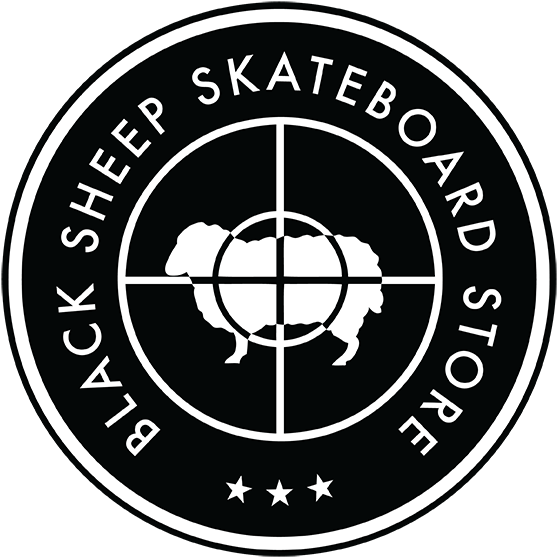A Guide to Buying Skateboard Decks
Choosing a skateboard deck made simple
For beginners, the differences between skateboards can be hard to spot. There are plenty of features which distinguish different skateboard brands but to the untrained eye it would be easy assume that all skateboards are the same.
We recommend that anyone purchasing their first deck pays attention to two key factors: size and graphic as a board that feels comfortable and featuring artwork you like is always a winner.
The actual ‘board’ part of a skateboard is called the deck. These are usually ‘popsicle’ shaped, with various sizes, measured in inches, and need a rough sandpaper like black layer called griptape applied to the top before it is ridden.
The front of a deck is called the nose and the back is the tail and each end gradually raises up towards the tip. Boards also have a U-shaped curve across the width which is called the ‘concave’.
Every board brand has a slightly different level of how far the nose and tail are elevated which affects the board’s ‘pop’ – meaning how a deck responds when pressure is applied to the nose/tail to make contact between the board and any surface when performing tricks.
It is very unlikely that beginners will take immediate notice of the other finer details of their first board, as preferences develop over years of skateboarding, but here’s everything else you need to know about skateboard decks:

How is a skateboard constructed?
The majority of skateboard decks are made from North American or Canadian Maple wood in a manufacturing process which involves gluing seven plies together. After using a heat pressurized mold to form one solid board - decks are then cut, drilled, shaped and finished by applying graphics to the bottom (and sometimes top) sheet of wood.
There are a wide range of skateboard manufacturers but it isn't uncommon for different brands to use the same woodshops but creating decks of their own exclusive shapes and concaves. While maple is the industry standard wood for deck production, the country of production differs between brands. Major woodshop factories include:
PS Stix: Founded by Paul Schmitt and working between Mexico and the USA.
Bareback Skates/Generator Distribution: Also based out of Mexico and make boards for established companies (Anti-Hero, Real and Krooked) and newer brands such as Polar Skate Co.
Pennswood and Chapman: Are separate woodshops, both based on the East Coast of America, and make boards for Lovenskate and Supreme, respectively.
DSM: Manufacture boards in China for their in house brands (almost, Blind, Darkstar, enjoi) and other companies around the world. Dwindle also specialize in ‘Impact Construction’ which adds carbon-fiber areas to reinforce certain boards but at a higher cost than their standard decks.
HLC: Jart Skateboards’ in house woodshop who also manufacture boards for many European skateboard companies.
How are wide are skateboards?
Size is the most important aspect in buying your first skateboard. If a deck is too small then it’s likely you will have a hard time finding your balance and if too wide you may struggle to flip the board when learning tricks, especially as a beginner.
Skateboard decks generally range from 7.5” to 8.75” for popsicle shaped boards while ‘Mini boards’ are intended for skateboarders of a younger age or smaller stature and tend to come up at 7.3”/7.4”.
At Black Sheep, we consider an 8 inch board to be a good starting point. A good rule is if you have big feet you may be better suited a wide board and vice versa.
We believe standing on a variety of decks and sizes before making your decision is vital in choosing your ideal deck. Anyone is welcome to visit us in store, stand on any deck that catches your eye and ask our staff for advice before making a final decision. You can also email any enquiries to contact@blacksheepstore.co.uk or give us a call on 0161 238 8641.
Skateboard length is less varying and important than width. Boards up to 8.25 inches wide tend to measure between 31 or 32 inches long. While decks that are 8.375 inches wide (and above) may lean more towards 32 inches, or more, lengthways.

Skateboard length and wheelbase.
The length of a skateboard directly corresponds to the wheelbase - meaning the distance from one set of bolt holes to another. Skateboards generally have a 14 inch wheelbase but it usually isn’t taken into much consideration even by people who have skated for a number years. However, vert skateboarders generally ride wider decks and might choose a longer board with a larger wheelbase for stability when skating big ramps.
When choosing your first deck we are confident in saying that skateboard length is far less likely to affect your skating than the width of your board will so just focus on finding a board of a comfortable width.

Are all skateboards the same shape?
Skateboard shapes have constantly evolved since our culture was born in the 1960s. The first decks resembled a flat miniature surfboard but as ramp skating grew - wider and longer noises and tails were introduced as tricks progressed.
‘Old school’ shapes (sometimes called ‘fishtails) and pool boards echo the style of skateboards before popsicle shaped decks became the standard. These decks can start around 9” and have different widths all around with wider tails and shorter noses.
Examples include Santa Cruz and Powell-Peralta who continue to issue their classic shapes and graphics. Whereas Welcome Skateboards is a modern company that exclusively produces non-popsicle shaped decks.
By the early 1990s, what we now consider ‘popsicle’ shaped skateboarders became customary and over twenty years later remain the prominent skateboard shape.
Though the nose and tail of a skateboard may appear to mirror each other, one will usually have more pop than the other, and the curve of the board towards the tip may also be more gradual or sharp depending on brand.
A good example is Quasi Skateboards who offer such less tapered shapes, commonly called ‘square’, while brands such as Girl and Chocolate Skateboards have a more conventionally gradual and round curve.
What is skateboard deck ‘concave’ and why does it matter?
‘Concave’ refers to how skateboard curves across the width and length to help your feet grip to the deck. As you become more accustomed to skateboard decks you will begin to notice how steep or shallow concave can be.
A deck should never be completely flat unless it is polyprop vinyl cruiser.
Some brands offer one concave across their whole range and but most have a few to choose from which is usually made clear on the deck’s packaging. Examples include Baker Skateboards, with a variety concaves, and The National Skateboard Co. who release the majority of their decks with the option of medium or high concave.
Standard popsicle shaped boards tend have a progressive concave which is flat the rises towards each edge or in some cases a more radial style of concave which is a complete curve from edge to edge with little-to-no flat space.
Again, concave isn't something you are likely to take into account if you are just starting out skateboarding although if you’re more experienced and are switching from a familiar brand to a new one, then we recommend standing on that board in store before deciding.

Skateboard graphics and artwork.
Skateboard graphics are applied in the final stage of manufacturing. Although usually applied using a heat transfer, in some cases (usually for limited or special edition boards graphics) traditional print screening and silk screen methods are used.
A notable exception is the UK company Lovenskate who hand screen all of their boards on home turf.
Some companies utilize embossed bottom and top layers of ply when pressing boards which provides a distinctive look as the artwork wears away.
‘Slick’ decks are a less common with skateboarding brands. This type of board construction features a thin bottom layer of vinyl plastic which the graphic is then printed onto. Originally introduced as an alternative to rails, this technology allows boards to slide on surfaces with greater ease and the development of ‘slick’ boards has become more refined over the years. Notably, Alien Workshop, have re-issued some of their most iconic designs as modern slicks.
Otherwise, a skateboard graphic does not affect the way a board performs but are always the most important part a company’s image. We recommend looking up the work of Todd Bratrud, Evan Hecox, Jim Phillips and Joe Castrucci for a taste of the amazing art that has come from skateboarding culture!
For more information on skateboarding hardware browse our other guides:
Skateboard Trucks Buying Guide
Skateboard Wheels Buying Guide
Skateboard Bearings Buying Guide

